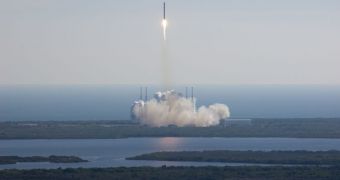A press release from the Space Exploration Technologies Corporation (SpaceX) indicates that the company has just finished a preliminary design review (PDR) of its DragonRider launch abort system (LAS). The new design is different from any other of its kind.
Over the past couple of years, SpaceX has distanced itself from the pack of competitors seeking to provide orbital services for NASA. The American space agency is funding the Commercial Crew Development (CCDev) initiative.
In addition to the Hawthorne, California-based company, the CCDev2 also includes the Boeing Company, Virginia-based Orbital Sciences Corporation and Blue Origin, of Kent, Washington.
Most of these companies are building rockets and space capsules to deliver cargo to the International Space Station (ISS), but the big winner in this competition will be whoever is capable of sending astronauts to space as well. Passing the PDR represents a huge step in this direction for SpaceX.
The launch abort system is a safety mechanism that needs to be installed on all manned spacecraft, according to NASA specifications. What it does is it fires a series of small, bur powerful, motors when something goes wrong during launch.
The LAS is usually installed on top of space capsules. If a problem is detected in the rocket carrying the spacecraft, then the system is activated. The thrusters fire instantly, accelerating the capsule out of harm's way. This is very useful if the delivery system explodes or suffers other catastrophic damage.
“Dragon’s integrated launch abort system provides astronauts with the ability to safely escape from the beginning of the launch until the rocket reaches orbit. This level of protection is unprecedented in manned spaceflight history,” DragonRider program co-leader David Giger explains.
“Each milestone we complete brings the United States one step closer to once again having domestic human spaceflight capability” says SpaceX DragonRider program co-leader and former NASA astronaut Garrett Reisman, quoted by Universe Today.
If the LAS is successfully developed, then SpaceX estimates that a trip to low-Earth orbit would cost about $20 million per seat, as opposed to the $63 million NASA is currently paying the Russian Federal Space Agency (RosCosmos) for a seat on a Soyuz capsule.
Russia is now the only country which still retains the ability to place astronauts in orbit. The United States has signed collaboration contracts with RosCosmos until 2015, so as not to lose access to the orbital facility.

 14 DAY TRIAL //
14 DAY TRIAL //